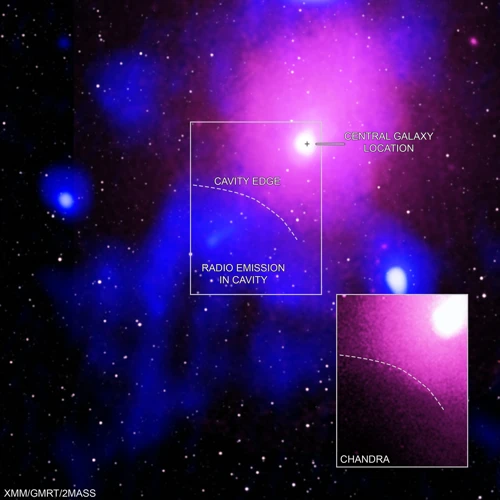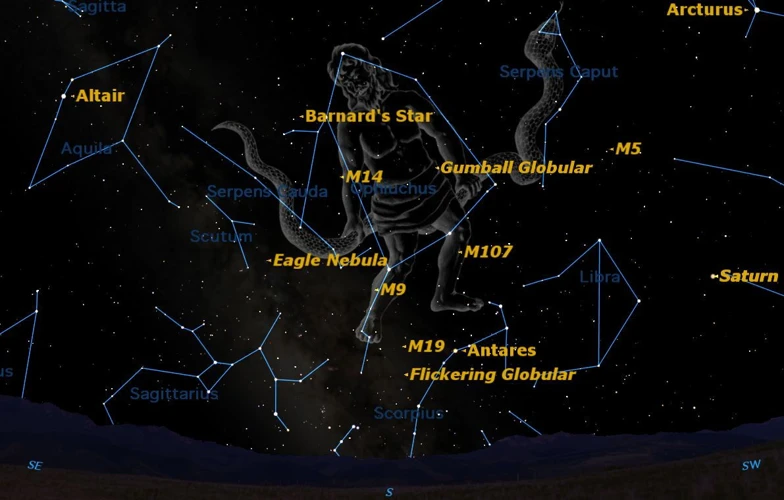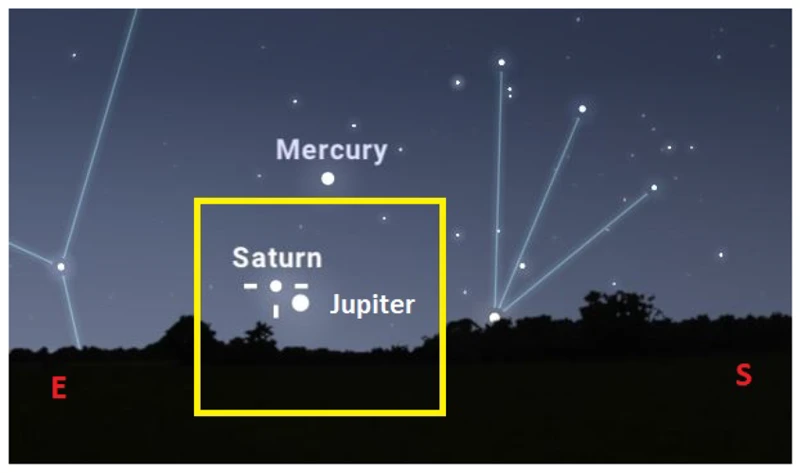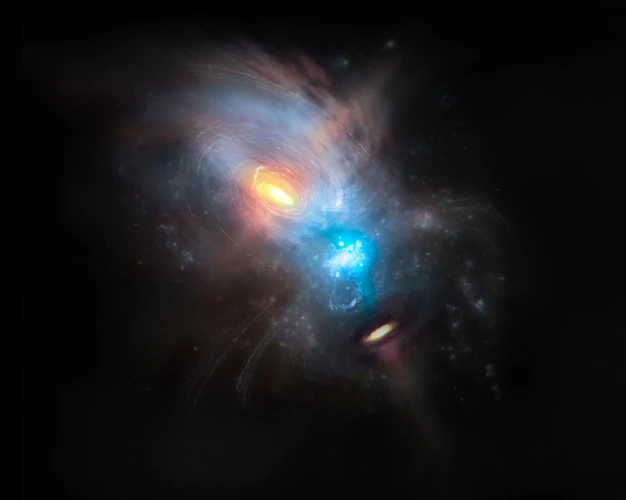Have you ever gazed up at the night sky and wondered about the mesmerizing patterns of stars? How is it possible that such random specks of light can form intricate shapes and constellations? The answer lies in the fascinating science behind the formation of constellations. These celestial patterns have captivated humankind for centuries, captivating our imaginations and guiding our navigation through the vast expanse of the cosmos. In this article, we will delve into the rich history, the scientific principles, and the modern tools that contribute to our understanding and recognition of constellations. Prepare to embark on a journey through time and space as we explore the mysteries behind these celestial wonders.
Contents
- What are Constellations?
- Early Observations
- Formation of Constellations
- Modern Interpretation and Recognition
- The Role of Modern Technology
- Conclusion
- Frequently Asked Questions
- References
-
Frequently Asked Questions
- 1. How many constellations are officially recognized?
- 2. Can constellations be seen from all parts of the world?
- 3. Are constellations fixed or do they change over time?
- 4. How do astronomers name constellations?
- 5. Can you see the same constellations from both hemispheres?
- 6. What is the significance of the North Star in constellation formation?
- 7. Are all stars in a constellation physically connected?
- 8. How do astronomers study the formation of constellations?
- 9. Can constellations exist without mythology or cultural significance?
- 10. Can modern technology help in the discovery of new constellations?
- References
- Read More
What are Constellations?

Constellations are patterns of stars that appear to form recognizable shapes in the night sky. These celestial formations have captured the curiosity and imagination of humans throughout history. The word “constellation” comes from the Latin word “constellatio,” which means “set with stars.” While the specific constellations we see may vary depending on our location and the time of year, they are universally recognized across different cultures and civilizations. These patterns were named after various mythological figures, animals, and objects, such as Orion, Ursa Major, and the Big Dipper. The stories and legends associated with these constellations have been passed down through generations, shaping our understanding of the night sky and our place in the universe. Some cultures even used constellations for practical purposes, such as navigation and timekeeping. Whether it’s the tales of ancient Greek gods and goddesses, the exploration of constellations in the southern hemisphere, or unraveling the secrets of the Cygnus constellation and its Northern Cross, constellations continue to fascinate and inspire us to explore the wonders of the cosmos.
Early Observations

Early observations of the night sky played a crucial role in our understanding and appreciation of constellations. Ancient civilizations from around the world were captivated by the stars, and their observations paved the way for the development of astronomy. In ancient Greece, for example, astronomers like Hipparchus and Ptolemy made significant contributions to mapping and cataloging the stars. They created star catalogs and identified important constellations that are still recognized today. The Egyptians, on the other hand, tied their observations of the stars to their mythology and religious beliefs, incorporating them into their rituals and storytelling. Similarly, the indigenous peoples of the southern hemisphere developed their own unique constellations and sky maps, providing a different perspective on the night sky. These early observations of constellations not only served practical purposes like navigation and agriculture, but they also inspired tales and legends, shaping our cultural understanding of the cosmos. For more information on ancient Greek gods and goddesses and the tales and legends associated with constellations, follow this link.
The Role of Mythology
The role of mythology in the formation and naming of constellations is significant. Ancient civilizations from around the world looked up at the night sky and saw more than just random arrangements of stars – they saw stories, gods, and creatures. Mythology served as a way to give explanation and meaning to the celestial patterns they observed. For example, in Greek mythology, the constellation Orion is said to represent a great hunter, while the constellation Ursa Major, also known as the Big Dipper, is associated with the story of a bear. The tales and legends linked to these constellations provided a cultural narrative and served as a way to pass down knowledge and stories from one generation to another. These myths not only helped people remember the patterns of the stars but also ignited their imagination and conveyed moral lessons. Exploring the connections between mythology and constellations provides us with a glimpse into the rich tapestry of human history and our ongoing fascination with the night sky.
Navigation and astronomy have been intricately intertwined throughout history. Early civilizations recognized the value of constellations in guiding their journeys across vast oceans and unknown territories. By observing and studying the night sky, sailors and explorers were able to navigate and determine their position on Earth. By aligning themselves with specific constellations, such as Polaris, also known as the North Star, they could establish their latitude and approximate direction. The Southern Cross, a prominent constellation in the southern hemisphere, became a crucial navigational tool for sailors traveling below the equator. Ancient mariners relied on these celestial landmarks to navigate uncharted waters and reach their desired destinations. In addition to aiding navigation, astronomy played a fundamental role in developing calendars and understanding the passage of time. By observing the movement of celestial objects, early astronomers could predict seasons, solstices, and equinoxes. The connection between navigation and astronomy is evident in the history books of ancient seafaring civilizations and continues to be explored and celebrated today. To learn more about navigating by the stars in the southern hemisphere, check out our guide to exploring southern hemisphere constellations. Additionally, if you’re interested in unraveling the mysteries of the Cygnus constellation and its Northern Cross, consider reading our guide to the Cygnus constellation.
Formation of Constellations

The formation of constellations involves several factors that contribute to the perceived patterns of stars. One key aspect is stellar associations, where stars that are physically close to each other appear to form a group or shape from our vantage point on Earth. Another factor is proper motion, the apparent movement of stars over time due to their actual motion through space. This motion can cause constellations to slowly change shape and configuration over long periods. Additionally, line-of-sight alignment plays a role, where stars that are not physically close together can appear to form a pattern when viewed from Earth. These factors, combined with the human inclination to find meaning and patterns in the world, have given rise to the diverse and captivating constellations we observe in the night sky. It is through scientific investigation and the study of these phenomena that we gain a deeper understanding of the formation and evolution of these celestial arrangements.
Stellar Associations
Stellar associations play a crucial role in the formation of constellations. These associations refer to groups of stars that are physically connected or share a common origin. One example of a stellar association is an open cluster, which is a collection of stars that formed from the same molecular cloud. Open clusters, such as the famous Pleiades in the constellation Taurus, are relatively young and contain hot, massive stars. Another type of stellar association is a globular cluster, which consists of hundreds of thousands or even millions of stars tightly bound together by gravity. These clusters, like the Hercules Cluster in the constellation Hercules, are much older and predominantly contain old, low-mass stars. Additionally, binary star systems, where two stars orbit around a common center of mass, can also contribute to the formation of constellations. These groups of stars, whether in clusters or binary systems, appear close to each other in the sky, giving rise to the patterns and shapes that we recognize as constellations. The diverse nature of stellar associations adds complexity and variety to the constellations we observe and appreciate.
Proper Motion
Proper motion refers to the apparent movement of stars across the sky over time. While stars may appear fixed from our vantage point on Earth, they are actually in constant motion. This motion is influenced by a variety of factors, including the star’s distance from Earth and its velocity in space. Over long periods of time, this proper motion can cause stars within a constellation to drift apart, altering their original formation. However, the changes are relatively slow and imperceptible to the human eye. Proper motion is measured by observing a star’s position relative to background objects over a span of years. By tracking these minute shifts in position, astronomers can determine the speed and direction of a star’s motion through space. Through the study of proper motion, astronomers have discovered that the stars within a constellation may not be physically connected or located at the same distance from Earth. Instead, they form an optical illusion from our perspective. Nevertheless, these apparent connections continue to serve as valuable tools for studying and navigating the night sky.
Line-of-Sight Alignment
Line-of-sight alignment is a crucial factor in the formation of constellations. While stars within a constellation may appear close together in the night sky, they may actually be located at vastly different distances from Earth. This phenomenon is known as “depth perception” in astronomy. When we observe a constellation, we are essentially looking at stars that are not physically connected but appear to form a pattern due to our line-of-sight from Earth. This alignment illusion occurs because the stars in a constellation are usually much closer to us than they are to each other. For example, in the Orion constellation, the stars Betelgeuse and Rigel may appear close together, but they are actually separated by hundreds of light-years. This line-of-sight alignment gives constellations their distinct shapes and allows us to recognize and distinguish them in the night sky. In reality, the stars in a constellation are scattered throughout the vastness of space, but from our perspective, they create an interconnected visual display that has captivated stargazers for centuries.
Modern Interpretation and Recognition

Modern Interpretation and Recognition of constellations have evolved with advancements in technology and scientific understanding. While early civilizations relied on myths and legends to identify and interpret celestial patterns, today we have a more systematic approach. One aspect of modern interpretation involves the identification of stellar associations. Astronomers observe groups of stars that are gravitationally bound and move together through space. These associations can help us understand the origins and formation of stars within a particular constellation.
Another factor to consider is proper motion, which refers to the apparent movement of stars across the sky over time. By studying the proper motion of stars, astronomers can determine whether they belong to a specific constellation or if they simply appear to be aligned due to our line-of-sight perspective. This understanding helps refine the boundaries and shapes of constellations.
Modern recognition of constellations also relies on technology. Telescopes and photography have allowed astronomers to capture detailed images of stars and identify patterns that are not visible to the naked eye. This enables scientists to study constellations with greater precision and discover new associations or features within them.
Astronomical software and databases play a crucial role in the identification and recognition of constellations. These programs provide astronomers with extensive catalogs of stars and their positions, making it easier to compare observations and determine if a specific grouping of stars forms a recognizable pattern. Additionally, these tools allow for three-dimensional modeling, providing a more comprehensive understanding of how constellations appear from different viewpoints in space.
The modern interpretation and recognition of constellations are based on scientific principles, advanced technology, and extensive databases. By studying stellar associations, proper motion, and utilizing tools like telescopes and astronomical software, astronomers can gain deeper insights into the formation, characteristics, and boundaries of constellations. These advancements have expanded our understanding of the cosmos and continue to inspire further exploration and discovery.
The Role of Modern Technology

Modern technology has revolutionized our understanding and recognition of constellations. The development of telescopes and advancements in photography have allowed us to capture detailed images of distant celestial objects, unveiling new insights into the formation and structure of constellations. Telescopes enhance our ability to observe fainter stars and galaxies, revealing intricate details within constellations that were once invisible to the naked eye. Astronomical software has also played a crucial role in analyzing and mapping the night sky. With the help of these digital tools, astronomers can accurately track the movement of stars and identify constellations with precision. These advancements have made it possible to visualize constellations from different perspectives, aiding in the exploration of the universe in three dimensions. The combination of technology and human curiosity continues to push the boundaries of our knowledge, enabling us to appreciate the beauty and complexity of constellations in unprecedented ways.
Telescopes and Photography
Telescopes and photography play a crucial role in our modern understanding and exploration of constellations. Telescopes allow us to observe celestial objects with enhanced clarity and detail. They can capture the faint light emitted by stars and galaxies, expanding our view beyond what is visible to the naked eye. By magnifying the light-gathering power of the lenses or mirrors within the telescope, astronomers are able to study the intricate patterns and structures within constellations.
Photography has revolutionized the way we document and analyze the night sky. Instead of relying solely on human observation and memory, photographs provide a permanent record of celestial objects and their positions within constellations. Astronomers can use long-exposure photography to capture the intricate details of stars, nebulae, and other celestial phenomena within a specific constellation. These photographs help in identifying and classifying stars, detecting variations in brightness, and mapping the intricate relationships between celestial objects within a constellation. Additionally, advancements in digital astrophotography have allowed for even more precise and accurate imaging of constellations.
With the aid of telescopes and photography, astronomers can now delve deeper into the mysteries of constellations. They can study the life cycles of stars, identify new stars and celestial objects within constellations, and uncover hidden details that were previously inaccessible. These technological advancements have opened up a new era of exploration, enabling us to expand our knowledge of constellations and the vast universe they represent.
Astronomical Software
Astronomical software plays a crucial role in modern interpretation and recognition of constellations. This specialized software harnesses the power of advanced technology to aid astronomers in their study of the night sky. One notable example of astronomical software is planetarium software, which allows users to simulate the night sky on their computer screens. With just a few clicks, users can explore different constellations, track the movement of stars, and even travel through time to witness celestial events from the past or future. These programs provide a highly detailed and accurate representation of the night sky, making it easier for astronomers and enthusiasts alike to identify and study constellations. Another type of astronomical software is star charting software, which uses astronomical data to generate interactive maps of the sky. These programs make it possible to pinpoint specific constellations, stars, and deep-sky objects based on their coordinates and other relevant information. Some software even offers augmented reality features, allowing users to point their devices at the sky and see real-time overlays of constellations and other astronomical objects. Additionally, astronomical software is used in data analysis and processing, helping astronomers manage and analyze vast amounts of observational data. These tools enable researchers to identify patterns, measure distances, and delve deeper into the mysteries of the universe. Thanks to astronomical software, the study and appreciation of constellations have been taken to new heights, bridging the gap between the celestial wonders above and the technological advancements of our modern world.
Conclusion

In conclusion, the formation and recognition of constellations have captivated humanity for centuries. From early observations rooted in mythology and the practicality of navigation to the modern interpretation aided by technological advancements, constellations have always held a special place in our understanding of the universe. The science behind constellations involves a combination of stellar associations, proper motion, and line-of-sight alignment, all contributing to the formation of these captivating patterns in the night sky. Through the use of telescopes, photography, and astronomical software, astronomers are able to observe and document constellations with increasing precision and detail. However, even with our advancements in technology, constellations continue to evoke a sense of wonder and curiosity within us, reminding us of our place in the vastness of the cosmos. So, the next time you find yourself gazing up at the stars, remember the rich history and scientific principles that have shaped our understanding of constellations, and let the beauty and mystery of these celestial formations inspire your exploration of the night sky.
Frequently Asked Questions

FAQs about Constellations
1. Can we see the same constellations from all parts of the world?
No, the constellations we see vary depending on our location and the time of year. Different latitudes and hemispheres offer different perspectives of the night sky.
2. How many constellations are there?
There are 88 officially recognized constellations, as defined by the International Astronomical Union (IAU). These constellations encompass the entire celestial sphere.
3. Are constellations permanent?
While the positions of the stars within a constellation remain relatively fixed over time, the overall appearance and visibility of constellations can change due to factors such as Earth’s rotation, orbital motion, and stellar proper motion.
4. How do constellations get their names?
Many constellations were named after mythological figures, animals, or objects from various cultures and civilizations. Astronomers and navigators throughout history have contributed to the naming of constellations.
5. Can constellations be seen during the day?
Constellations are typically not visible during the day due to the brightness of the Sun. However, with the aid of specialized equipment and techniques, it is possible to observe certain constellations even in daylight.
6. What is the significance of constellations in navigation?
Before the invention of advanced navigation tools, constellations served as important landmarks for sailors and travelers. By observing the positions of specific constellations, navigators could determine their location and direction.
7. Do different cultures have different interpretations of constellations?
Yes, different cultures have their own unique interpretations and names for certain constellations. For example, the constellation commonly known as Orion in Western astronomy is identified as “The Hunter” in Greek mythology.
8. Can constellations change shape over time?
While constellations appear to maintain their overall shape over long periods, the stars within them can have different motions. This can cause the apparent shape of a constellation to slightly change over many years.
9. Are there any constellations that can only be seen in the southern hemisphere?
Yes, there are several constellations that are exclusive to the southern hemisphere, such as the Southern Cross (Crux) and the Magellanic Clouds. Exploring these constellations offers a unique celestial experience.
10. What is the best way to observe constellations?
The best way to observe constellations is to find a location away from cities and light pollution. With the naked eye or with the aid of binoculars or telescopes, you can appreciate the beauty and wonder of these celestial patterns.
References
Frequently Asked Questions

1. How many constellations are officially recognized?
There are 88 officially recognized constellations, as established by the International Astronomical Union (IAU).
2. Can constellations be seen from all parts of the world?
Yes, constellations can be seen from all parts of the world, although some may be more visible in certain latitudes and seasons.
3. Are constellations fixed or do they change over time?
Constellations appear fixed from our perspective on Earth, but their positions do change over long periods of time due to the movement of stars.
4. How do astronomers name constellations?
Astronomers name constellations based on their shape and patterns. Many constellations have names derived from mythology or ancient cultures.
5. Can you see the same constellations from both hemispheres?
No, the constellations visible from the Northern Hemisphere are different from those visible in the Southern Hemisphere.
6. What is the significance of the North Star in constellation formation?
The North Star, also known as Polaris, is the brightest star in the constellation Ursa Minor. It serves as a reference point for navigation and helps locate other stars and constellations.
7. Are all stars in a constellation physically connected?
No, the stars within a constellation may appear close to each other from our perspective, but they are often at different distances from Earth and not physically connected.
8. How do astronomers study the formation of constellations?
Astronomers study the formation of constellations through the analysis of stellar associations, proper motion of stars, and line-of-sight alignment.
9. Can constellations exist without mythology or cultural significance?
Yes, while many constellations have mythological or cultural significance, astronomers also identify and name new constellations based purely on their scientific observations.
10. Can modern technology help in the discovery of new constellations?
Yes, modern technology such as telescopes, photography, and astronomical software aids in the discovery and recognition of new constellations.







